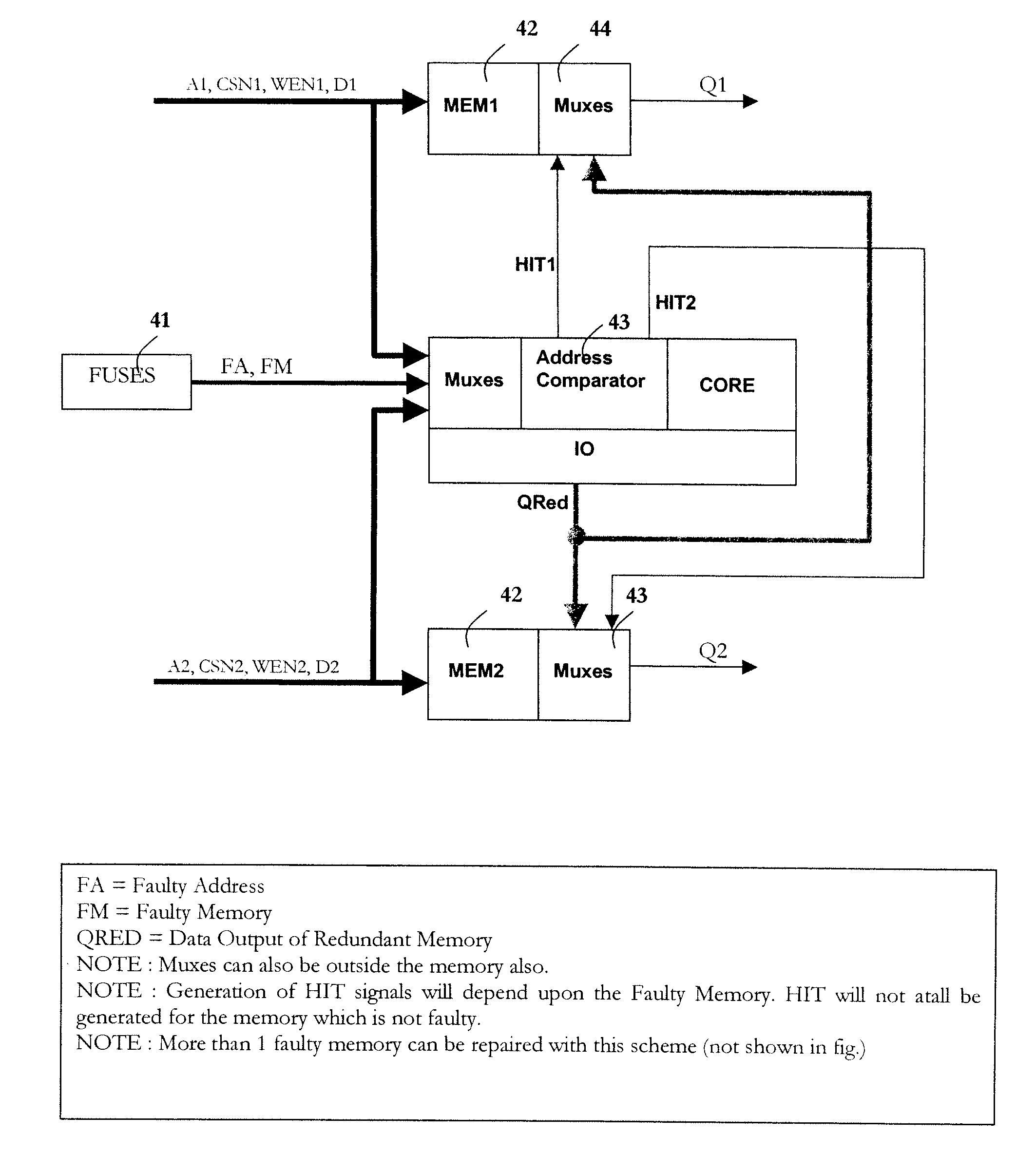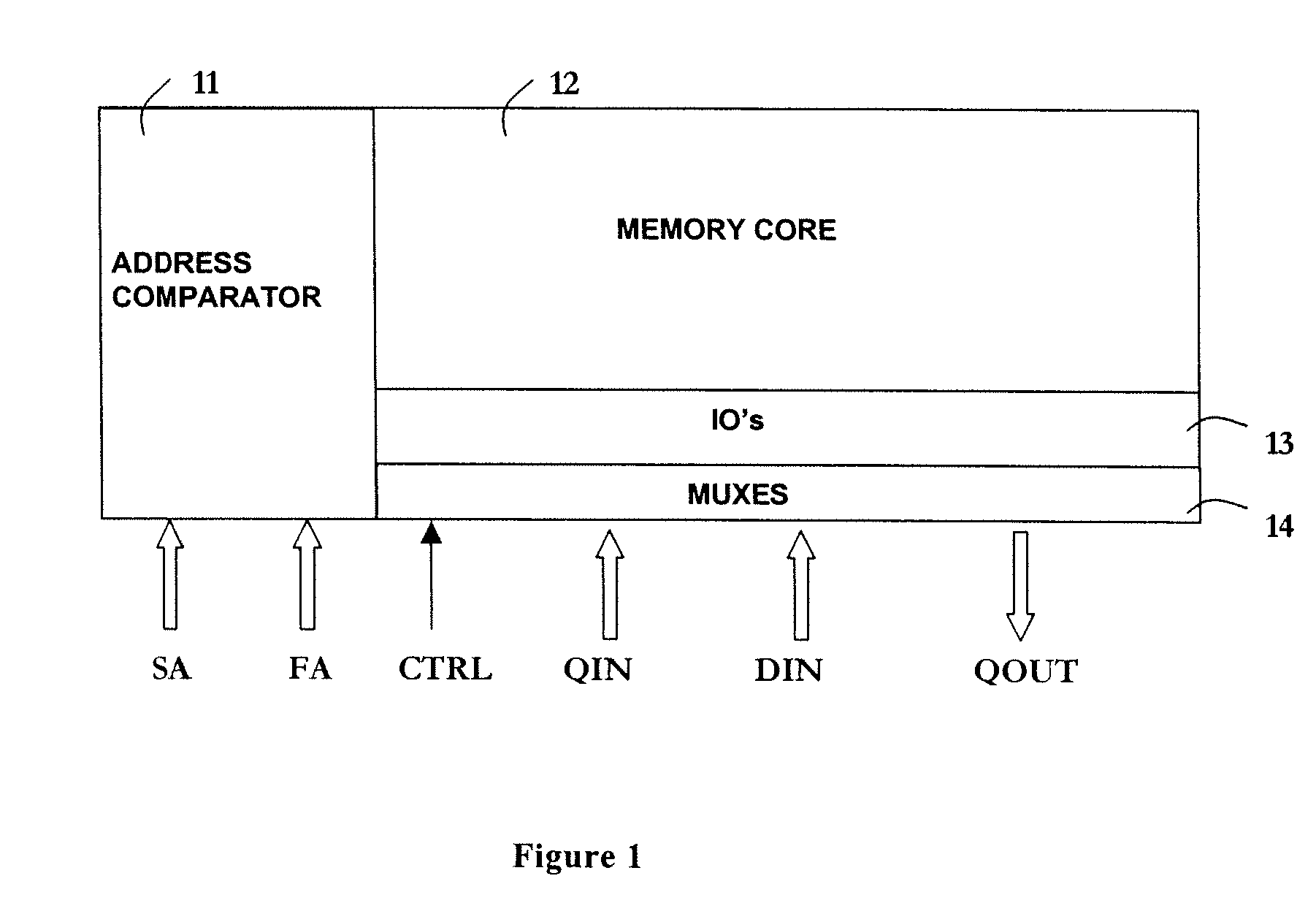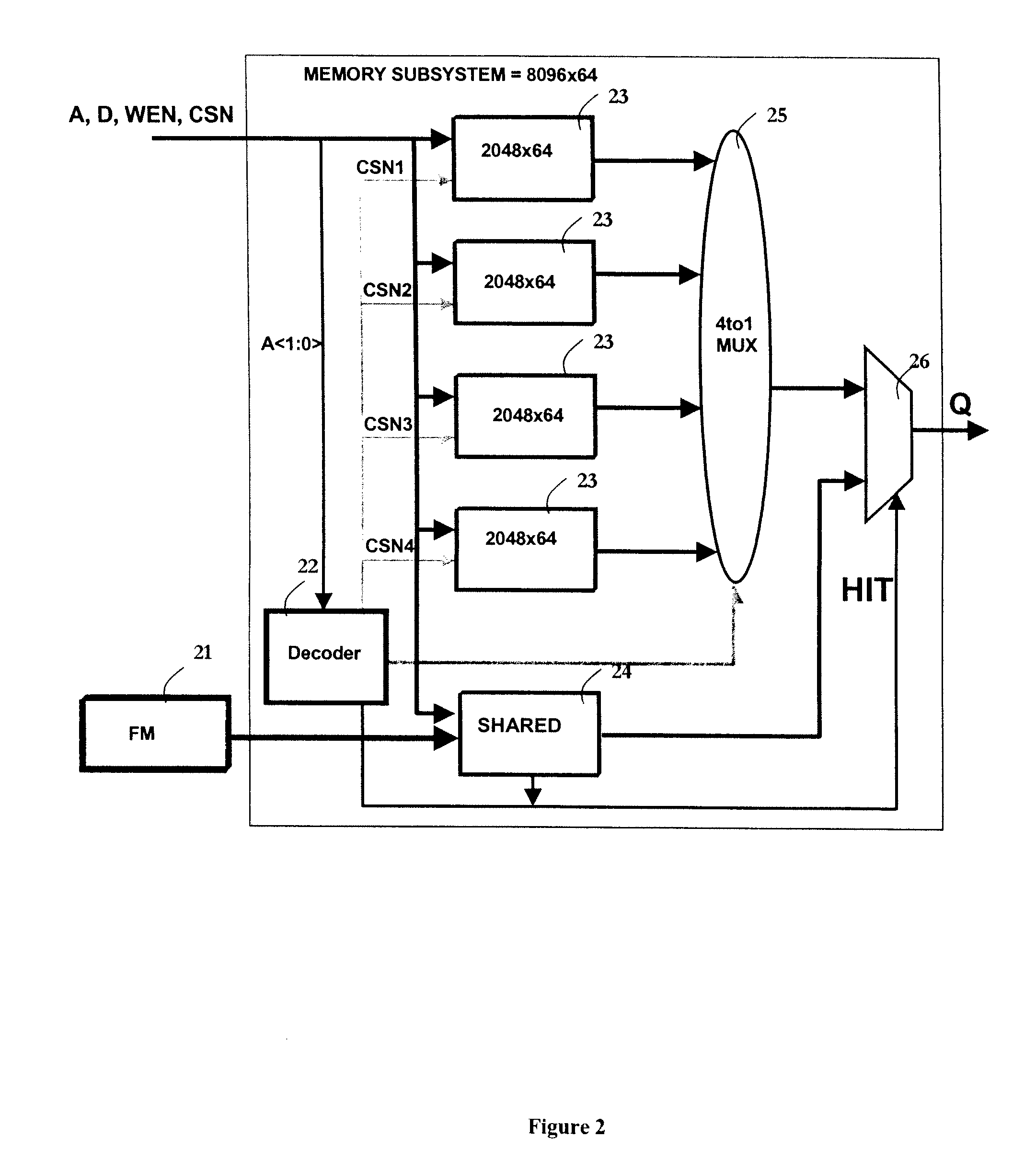Shared redundant memory architecture and memory system incorporating same
- Summary
- Abstract
- Description
- Claims
- Application Information
AI Technical Summary
Benefits of technology
Problems solved by technology
Method used
Image
Examples
Embodiment Construction
[0018] The current invention provides new high-speed memory system with modified redundant memories which are shared between various memories on a chip. Additionally, in the present invention, two different embodiments of shared redundant memory are provided for use depending on the memory systems on the chip. These memory systems can be categorized as follows: [0019] 1. Type-1 memory systems: In type-1 memory system, there are several small memories combined together to form a single large memory. [0020] 2. Type-2 memory systems: In type-2 memory system, there are several unrelated memories for different purposes located in close proximity of each other.
[0021] In both type-1 and type-2 systems, redundant memories are added to the system for purpose of repairing. The repair methodology / architecture is different from the existing techniques as the redundant memory is shared between various memories present on a SoC. However in order to henceforth differentiate normal memories from r...
PUM
 Login to View More
Login to View More Abstract
Description
Claims
Application Information
 Login to View More
Login to View More - R&D
- Intellectual Property
- Life Sciences
- Materials
- Tech Scout
- Unparalleled Data Quality
- Higher Quality Content
- 60% Fewer Hallucinations
Browse by: Latest US Patents, China's latest patents, Technical Efficacy Thesaurus, Application Domain, Technology Topic, Popular Technical Reports.
© 2025 PatSnap. All rights reserved.Legal|Privacy policy|Modern Slavery Act Transparency Statement|Sitemap|About US| Contact US: help@patsnap.com



